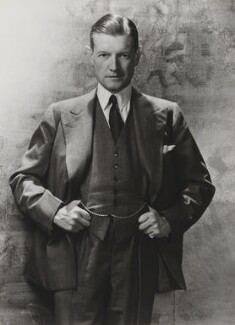And the Men Who Made Them

William Wrigley, Jr..

By Megan McKinney
Armour, Swift, Wrigley, Florsheim, Montgomery Ward and Marshall Field. These are names that have permeated American culture for more than a century and are now common household words that represent well-known products or vendors.
They are also the names of men who, with dozens like them, founded Chicago dynasties whose members rapidly became a part of the fabric of the nation’s developing aristocracy. They and their heirs have participated in the philanthropy, opulence, leadership, pomp and ceremony expected of those with great wealth but less than most in the high jinks, scandals and public frivolities that have diverted the American people for more than a century and a half. Typically, Chicago’s founders were from New England or New York State, offspring of farming families that had come to America from the British Isles several generations before.

Gustavus Swift.
The energy and courage of these self-made men produced the city’s astonishing 19th century explosion of prosperity—a prosperity that would create the earliest of Chicago’s great fortunes and towering dynasties, many of which continue to prevail into the 21st century.
As soon as the wealth was made, the branding process began. The founders hired fashionable architects, who built elegant houses with ballrooms in which they entertained with style.

Potter Palmer’s Castle.
They sent their children to be educated at patrician schools in the East. And they regularly made grand tours of Europe with their families, or their neglected wives and daughters roamed England and the continent together, staying in luxurious suites at grand hotels and routinely stopping in Paris to be fitted for gowns at Worth.

Lady Curzon, the former Mary Leiter of Chicago, in her famous Worth peacock dress.
They and their families soon joined networks connecting them with the aristocracy of England and the American East, and their heirs began a pattern of marriage to members of other emerging, or established, dynasties. In the 20th century, the children and grandchildren of the founders became models for glamorous characters from Chicago in novels by such writers as F. Scott Fitzgerald and W. Somerset Maugham.
 Ginevra King, model for F. Scott Fitzgerald’s Daisy Buchanan in The Great Gatsby.
Ginevra King, model for F. Scott Fitzgerald’s Daisy Buchanan in The Great Gatsby.
In England, well-known real-life figures included Ronnie Tree—born and raised abroad but grandson of both Chicago’s wealthy Lambert Tree and the first Marshall Field. Another was Chicagoan Sir Henry “Chips” Channon, a member of the royal inner circle, who married Lady Honor Guinness and charmed the aristocracy of London from his Belgrave Square mansion.

Chips Channon.
Coinciding with the launch of Chicago as the commercial capital of the Northwestern frontier was the opening up of the great American West. The sweep, the romance—and the rugged reality—of the Old West is the stuff of legend today. But the Chicago founders were true heroic figures—restless, “larger-than-life” men—who participated wholeheartedly in its epoch. Philip D. Armour, William Wrigley, N. K. Fairbank and a pair of Bordens each ventured westward to pursue riches from the earth before creating an enduring presence in Chicago.

A rodeo on the Farwell XIT Ranch.
These and other founders, and their heirs, returned to the wide country and purchased or bartered huge chunks of its robust glamour. The Farwell brothers owned the immense Texas Panhandle; Frank Butler continued buying massive portions of Montana and South Dakota; N. K. Fairbank was the namesake for Fairbank, Arizona, the railway supply point that served Tombstone; and Cissy Patterson was drawn back, year after year, to rough it with her cattle-rustling lover in Jackson Hole, Wyoming.

Walter Paepcke stumbled upon this charming Colorado ghost town.
The Chicago founders also participated in taking the image of the West beyond that of “cowboys and Indians” by heralding its recreational aspects. George Pullman’s Palace Cars publicized the West as “a land of breathtaking beauty and adventure,” Andrew McNally’s map-publishing company released The Travelers’ Hand Book to All Western Railways and The Illustrated Guide to Colorado, and Walter Paepcke transformed a dusty mountain ghost town into the country’s most glamorous ski resort, Aspen, Colorado.

Walter Paepcke founded Aspen to establish the Institute and Music Festival that bear its name. For him, Hollywood glamour and skiing were incidental.
The reach of Chicago’s founders and those who followed not only extended to the American East and West, but also on to Europe, influencing their era wherever they went, and, although their heirs fanned out in many directions, they have stayed close to the memory of roots in Chicago. Many continue to live in the city and its environs—particularly the Gold Coast, Lake Shore Drive, Lake Forest and Lake Bluff.
During the first four years of Classic Chicago, we published what now seems to have been a dizzying number of series about the city’s historic families within the category Classic Chicago Dynasties. They are there to find in the archives in the right margin of every home page of this publication—eight segments on House of Armour, 10 on the family of George Pullman, a series covering the Deerings and McCormicks, with another on the Shaws and McCutcheons, on to the Wrigleys, then the Piries—at least 20 dynasties represented in all.

The late William Wood-Prince was covered in House of Armour nearly five years ago.
It would seem we have gone as far as we can; however, there are many more stories to be told and families not yet mentioned. These will be offered in a new series with the overall title Great Chicago Fortunes of which this is the first segment.
Megan McKinney’s next segment in the Great Chicago Fortunes series will be The Prairie Avenue Set, which will focus on South Siders of the late19th century.
Author Photo:
Robert F. Carl






